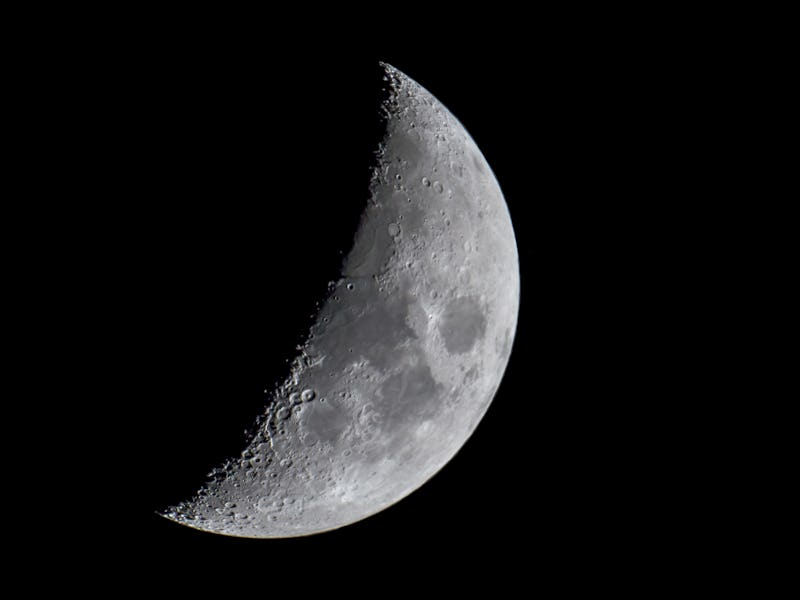Study: Lunar soil has the right stuff for “extraterrestrial photosynthesis”
It could pave a way for plants, fuel, and so much more.

Fresh lunar powder collected less than two years ago shows promising — albeit early — signs that it could support humans in space for long periods.
As part of a recent study published Thursday in the journal Joule, Chinese scientists opened Moon parcels from the country’s Chang’e-5 mission. In December 2020, this spacecraft performed a quick rendezvous with Earth’s natural satellite, collecting lunar soil from the Moon’s "Ocean of Storms" plain (Oceanus Procellarum) and bringing it back to our planet. In the new research, a team analyzed the moondust’s basic building blocks to see how it might serve as a cornerstone for life-sustaining chemical reactions on a future lunar base.
An Apollo 12 astronaut walking on the Moon’s “Ocean of Storms” region.
What’s new — The new study proposes “extraterrestrial photosynthesis,” a process by which humans in space can draw on just two simple, out-of-this-world ingredients — lunar soil and sunlight — to produce fuel and recycle carbon dioxide back into breathable oxygen on long-duration crewed missions to the Moon and Mars.
One major talking point for space agencies with their eyes to the skies: How do you power a trip far from Earth? The longest crewed lunar mission to date — NASA’s Apollo 15 flight in 1971 — lasted 12 days. They maintained themselves on the supplies they brought along, which had the heaviest payload in a lunar orbit at about 107,000 pounds.
Digging into the details — The study looks at ways to replenish water, oxygen, and fuel by using human byproducts, solar radiation, and local lunar soil called regolith. If this is successfully achievable, space agencies can save on cargo weight and vehicle space for crewed missions lasting weeks or even months.
Their preliminary findings inspired them to propose a model for how a self-sustaining Moon outpost could work.
Apollo 15 lunar module pilot Jim Irwin loads the lunar rover.
The team analyzed the Chang’e-5, or “CE-5,” regolith samples to see what chemicals they contained and then investigated how well these components could catalyze carbon dioxide into oxygen. Exhaled breath might be used for potable water, or turned into hydrogen or methane for fuel.
Their experiments yielded some positive results. They saw bubbles of hydrogen and oxygen gas, for example. The paper reports that compounds in lunar regolith catalyzed a reaction during a photovoltaic-driven water electrolytic (PV-EC) test, which takes light and water and turns the liquid into those two gases. On the Moon, the water used here would come from lunar ice and human breath that would have previously gone through a dehydrating process. The astronauts would use the water for drinking.
A diagram for “extraterrestrial photosynthesis.”
What’s next — A lot more needs to be done before the research is Moon-ready. The researchers wrote that “the current catalytic performance from the CE-5 lunar sample cannot fully satisfy the requirement of extraterrestrial survival,” adding that their findings weren’t on par with the efficiency of existing catalyst systems on Earth.
They wrote that researching the compounds on the Moon more thoroughly could lead to more success.